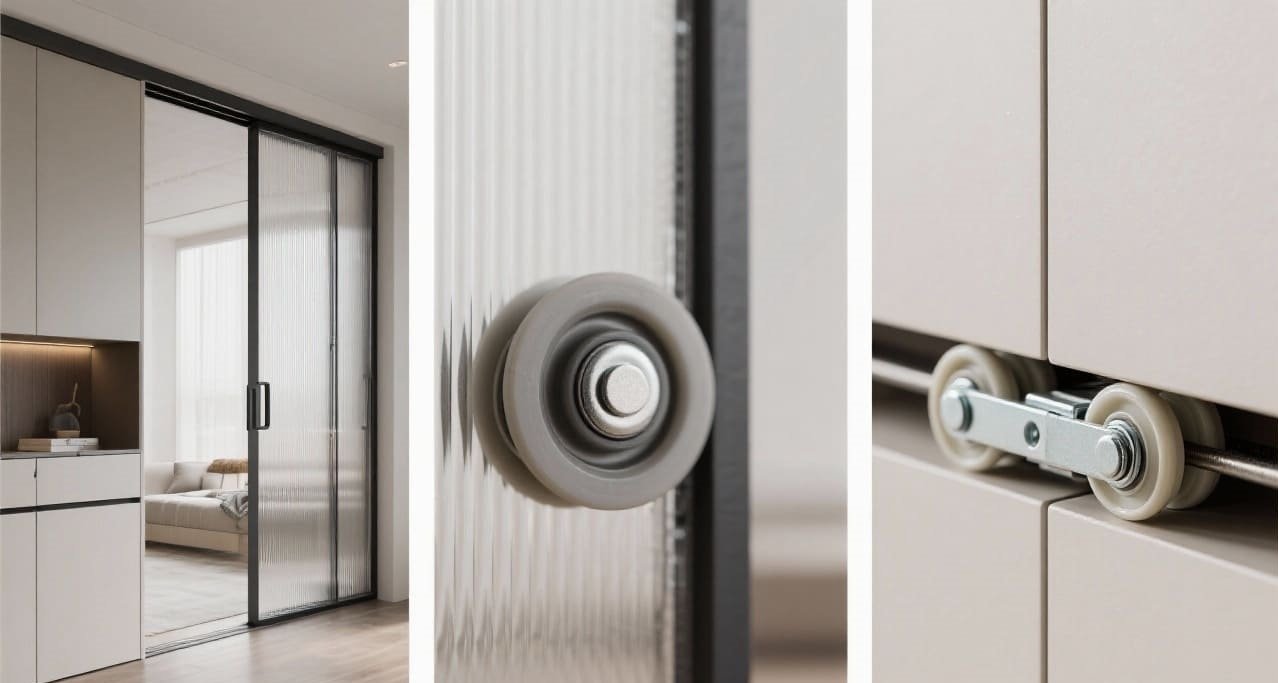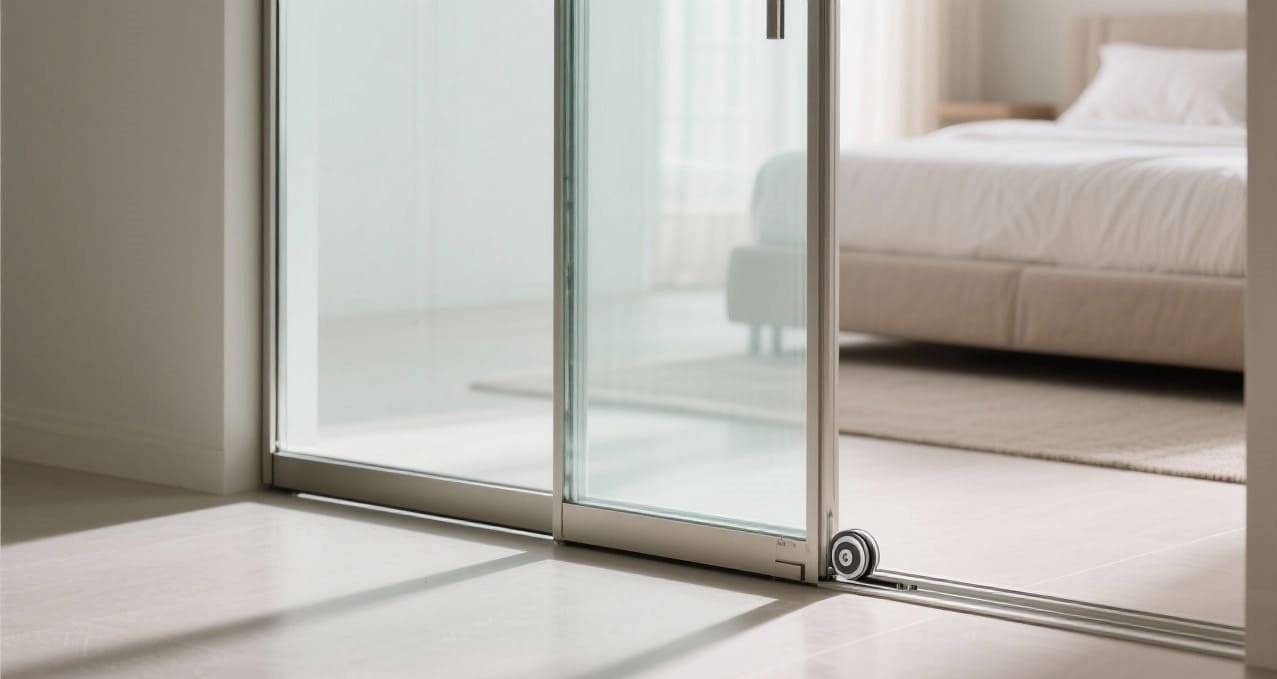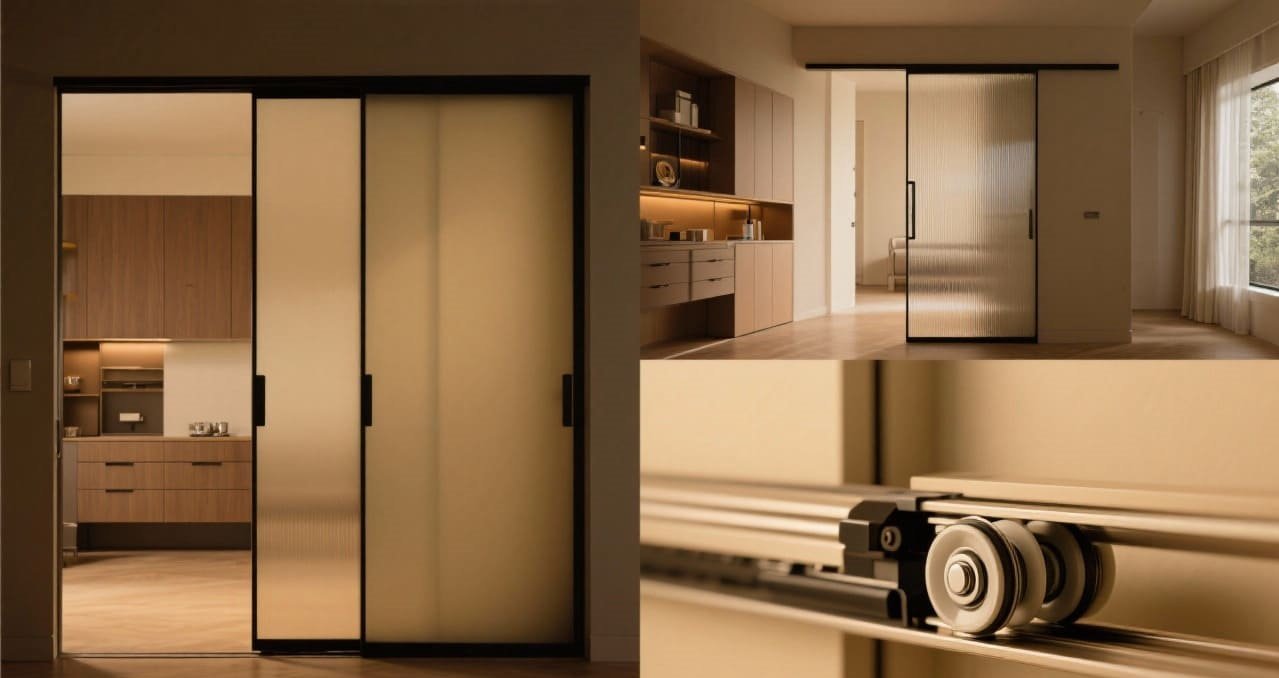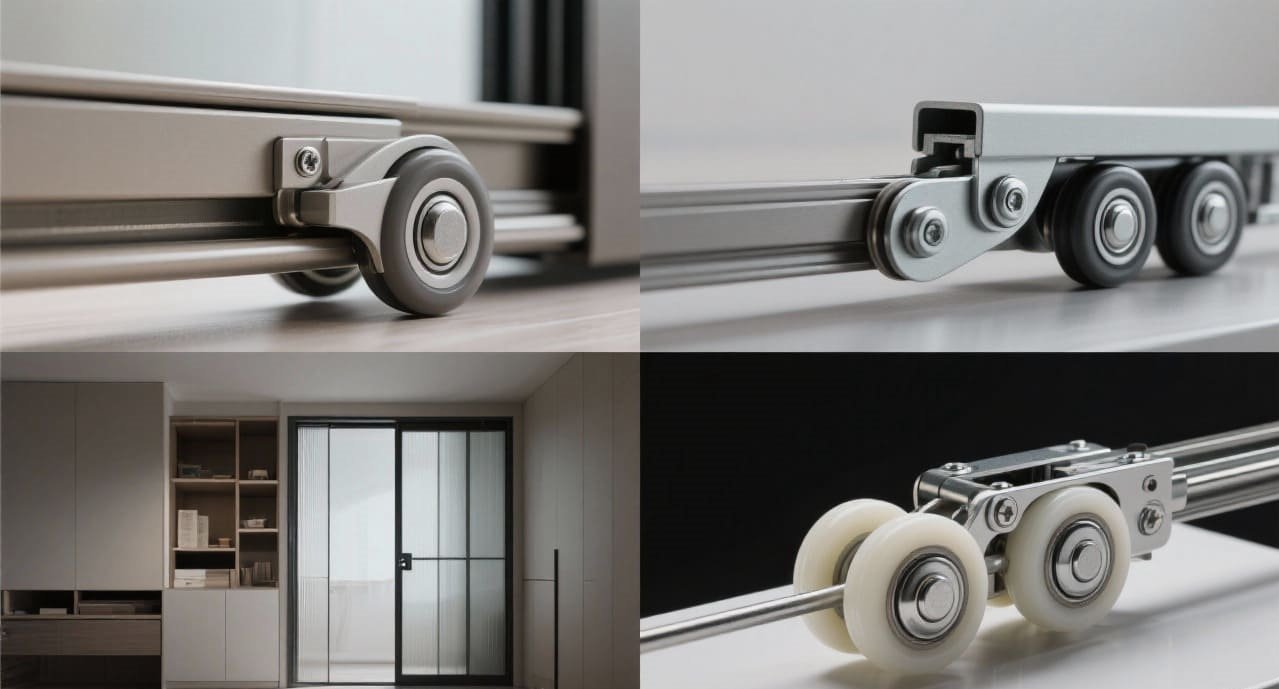Are you tired of noisy, grating sliding doors that ruin a room’s quiet? This noise suggests poor quality, which can frustrate your customers and lead to complaints.
Silent pulleys feature high-quality bearings and sound-dampening materials like nylon or special alloys. Their main characteristics are exceptionally low noise, smooth gliding motion, and superior durability. This creates a premium, silent experience for sliding doors, cabinets, and room partitions that customers love.

This sounds great, but what exactly makes a pulley "silent"? To really understand their value, it helps to first look at the basics of all pulleys. As a manufacturer, I deal with these components every day. Let’s break down the details so you can make the best purchasing decisions for your projects.
What are the characteristics of pulleys?
Choosing the wrong pulley can cause a whole system to fail. This leads to expensive repairs, wasted time, and very unhappy clients. Understanding a pulley’s basic characteristics is key.
A pulley is a wheel on an axle or shaft. It is designed to support movement and change the direction of a cable or belt. Its main characteristics include its wheel, axle, and housing. They are defined by their load capacity, material, and bearing type.

In my factory, we focus on three things when designing a pulley: the core components, the material, and the bearing. Each choice affects the final product’s performance, especially for silent operation. For a purchasing manager like my friend Abraham in Germany, getting this right means the difference between a successful product line and a problematic one.
Core Components and Materials
The wheel, or sheave, is the part the cable runs over. The axle is the pin it rotates on. The housing holds it all together. But the material is what defines its use. A simple steel pulley is strong but can be noisy. A nylon pulley is much quieter but can’t handle the same weight.
A Quick Material Comparison
Here is a simple table I use to explain the options to my clients. It helps them choose the right material for their specific needs, whether for furniture, heavy doors, or partitions.
| Material | Key Characteristics | Best For |
|---|---|---|
| Steel1 | High load capacity, very durable. | Heavy-duty industrial doors, barn doors. |
| Nylon/POM2 | Very quiet, self-lubricating, lightweight. | Wardrobes, cabinets, interior sliding doors. |
| Zinc Alloy | Good balance of strength and finish. | General furniture, glass doors. |
| Aluminum | Lightweight, rust-proof, modern look. | High-end glass partitions, exterior uses. |
What are the main characteristics of a movable pulley?
You need to move a heavy glass partition or a solid wood door. Using pure force is inefficient and can feel cheap to the user. A movable pulley is the solution.
A movable pulley has an axle that is free to move in space. Its main characteristic is providing a mechanical advantage. This means it can cut the force needed to move a load in half, making heavy objects feel much lighter.

I remember working with a new customer from Canada who was designing a line of heavy oak barn doors. He was worried that the end-users would find the doors too difficult to slide. I explained that we could solve this with a movable pulley system. In a horizontal sliding system, a movable pulley helps overcome the initial inertia and friction. It makes the door start moving easily and glide smoothly. The main characteristic here is the mechanical advantage. The pulley moves with the door, so the force you apply is doubled. The trade-off is simple: to move the door one meter, you have to pull two meters of the belt or cable. But the result is a heavy, high-quality door that feels light and effortless to operate. This is exactly the kind of premium experience that sells products.
What are the characteristics of a compound pulley?
Sometimes, a single movable pulley isn’t enough for very heavy loads. The system still feels heavy, or the design becomes too complex. A compound pulley system offers the perfect answer.
A compound pulley system uses a combination of fixed and movable pulleys. Its main characteristic is a greatly increased mechanical advantage. The more pulleys you add, the less force is needed to move the load, making it perfect for extremely heavy applications.

This is where our engineering gets interesting, especially for products like our heavy lifting wheels and large partition room sliding systems. A compound system combines the best of both worlds. The fixed pulley changes the direction of the force, so you can pull down to lift something up, which is often easier. The movable pulley provides the mechanical advantage.
How They Work Together
By combining them, we multiply the force. A simple system with one fixed and one movable pulley doubles your force. A system with two fixed and two movable pulleys quadruples it.
- Fixed Pulley: Stays in one place. It only changes the direction of the force.
- Movable Pulley: Moves with the load. It reduces the effort needed.
Connecting to Silent Operation
For these more complex systems, using high-quality silent pulleys3 is critical. With multiple wheels and more moving parts, the potential for noise increases. Each pulley must be manufactured with precision bearings4 and sound-dampening materials. This ensures that even the heaviest doors and partitions move not only with ease but also in complete silence. It’s this attention to detail that defines a truly premium hardware system.
Conclusion
In short, silent pulleys are all about quality materials and smart design. Understanding basic, movable, and compound pulley systems helps you choose the perfect, quietest hardware for any project.
Discover why steel is the go-to material for heavy-duty applications, known for its high load capacity and durability. ↩
Explore the benefits of Nylon/POM pulleys, including their quiet operation and lightweight nature, ideal for various applications. ↩
Explore the advantages of silent pulleys to enhance your understanding of noise reduction in complex systems. ↩
Learn how precision bearings can significantly enhance the efficiency and longevity of pulley systems. ↩

